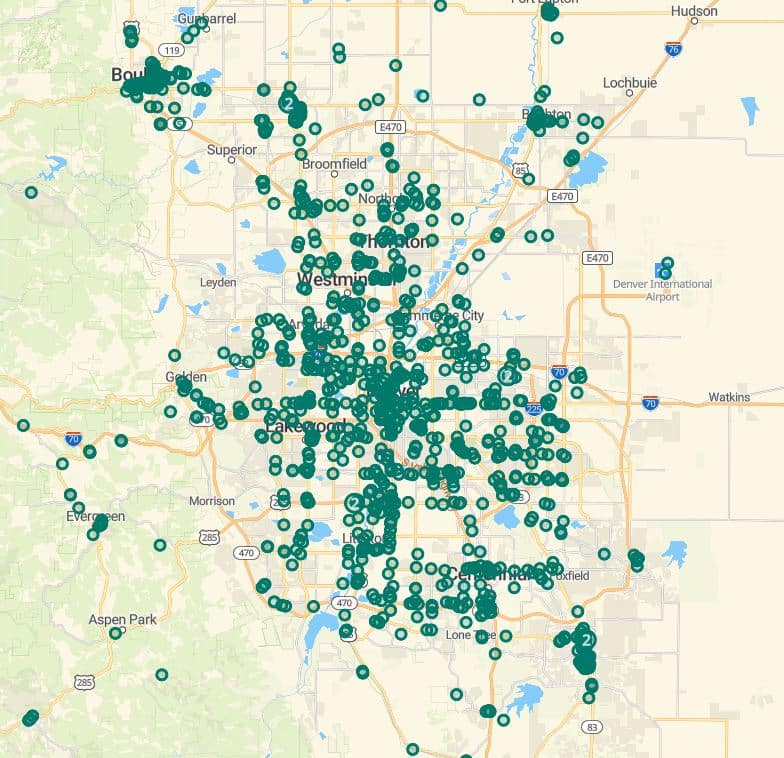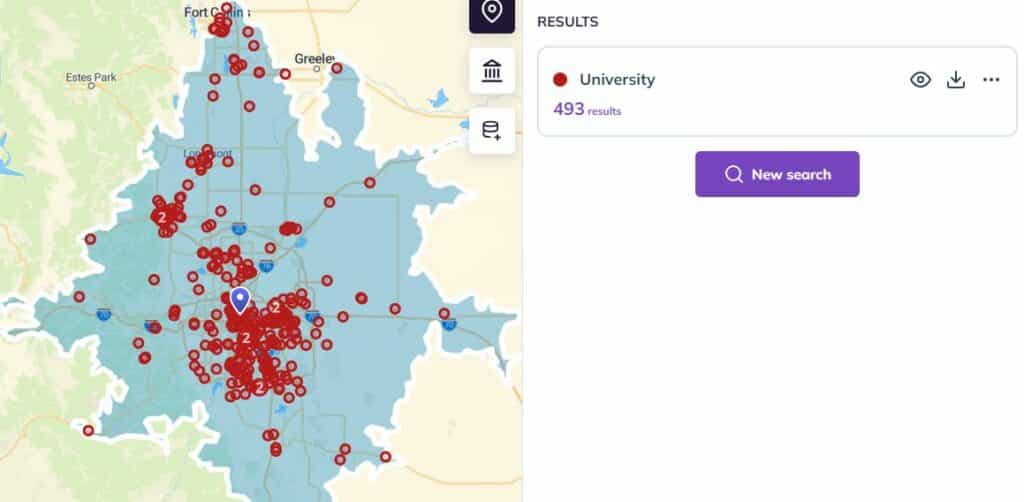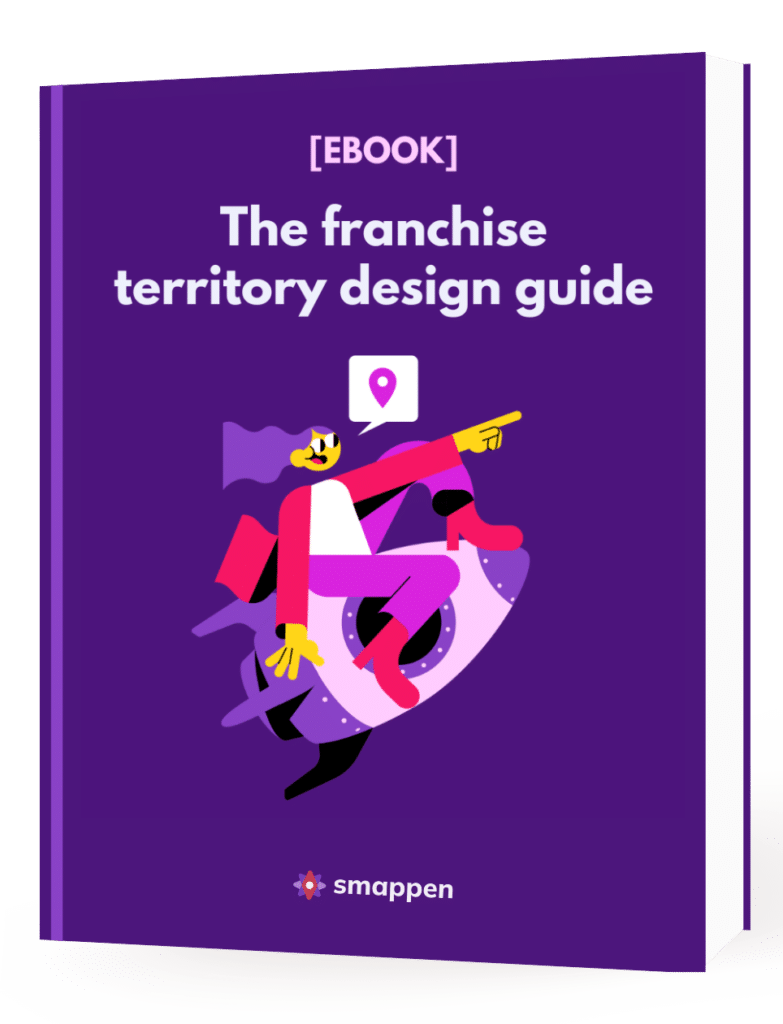Point of interest data isn’t just for finding a place to eat or things to do on your trip; it can be an essential tool for your business, too. Businesses of all sizes, in all sorts of industries, can use point of interest data for free from platforms like Google Maps and Smappen to power their business strategy, their market research, and more. The best part? Anyone can do it.
Let’s dive in.
To research the competition
No matter what industry you’re in, there’s probably points of interest data for your competition. Just look up their names — or even the type of business they have — and Smappen will give you a ton of data to work with. You’ll get their addresses, their hours of operation and, if you’re lucky, how busy they are at specific times of day. That can give you a ton of information about how they operate and what their clientele is like.
This is especially useful when you’re trying to find an ideal location for a franchise or a new business. By plugging in the names of a few of your competitors, you’ll get an idea of where they’re operating, which regions they’re avoiding, and how that can affect your own strategy. Combine this with a location intelligence tool like Smappen — which lets you easily draw isochrone or isodistance maps around a POI — and you’ll get an idea of their catchment areas too.
As a substitute for foot traffic data
Businesses and marketers use foot traffic data in their research to determine how busy specific locations are and discover patterns for a specific customer profile. This kind of data could tell you that neighborhood A is a lot busier on weeknights than neighborhood B, which gets more foot traffic on the weekends. But it can get more granular than that, too, telling you which stores specific customers visit, and in what order they do it.
This is incredibly valuable data — which is why it can get pretty expensive. Depending on the service, your company could find itself paying thousands of dollars a month for this information. That’s not in the budget for everyone.
And that’s where points of interest come in. While they’re not as deep as foot traffic data, they’re a lot more accessible. With a tool like Smappen, you get access to all sorts of points of interest, from local businesses to public transit data. For example, one of the best ways to use points of interest is to compare the density of specific businesses across neighborhoods to get a rough estimate of foot traffic — businesses like Starbucks are useful for this.

Finding complementary businesses
It’s not all about competition. No matter what industry you’re in, there are businesses out there that are complementary to yours, either because they’re typically visited by a customer in sequence with yours — think of a gym and a smoothie bar — or because their customers naturally overlap with yours. With point of interest data, you can easily pick out these complementary businesses on a map. If you’re doing this kind of research around an existing location, it can help give you ideas for local marketing efforts and potential business partnerships. If you’re in the process of picking a location, you’ll want to find a spot that’s surrounded by complementary businesses.
That said, point of interest data alone isn’t going to tell you which businesses are complementary. That’s where a bit of extra research will come in. To help you out, here’s a list of examples of complementary businesses:
- Beauty salon ←→ hairdresser
- Food and drink distributor ←→ supermarkets
- Real estate agency ←→ financial institutions
- Restaurants ←→ movie theaters
- Daycares ←→ businesses with more than 20 employees
These are just a few examples, and it should be pretty easy to find complementary businesses for your industry. From there, point of interest data can help you research these potential partnerships before you pick a location for a new business — or launch local marketing initiatives for an existing one.

Spot potential customers (or partners)
In the B2C (business-to-consumer) world, foot traffic and nearby amenities will help you get a sense of your addressable market in an area. For B2B (business-to-business) organizations, point of interest data makes market research that much easier. That’s because your potential customers usually have their own points of interest on platforms like Google Maps.
Say you run a cleaning company that specializes in commercial properties like office buildings or warehouses. If you want to know the best place to send sales representatives or buy advertising, you can just look up neighborhoods where these businesses are typically found, and let Google Maps do the rest. Even better, Google Maps will usually give you the contact information you need to add them to your list of potential leads.
But it doesn’t end with customers. Whether you’re a B2C or B2B business, you can use point of interest data to find potential partners — building relationships that go beyond simply setting up shop close to complementary businesses. That can mean sending each other customers, setting up a mutually beneficial exchange of services, or even having individual employees exchange their expertise across businesses.
Building inventory
This is more of a niche use case, but it’s highly relevant for a few industries, real estate being chief among them. Whether you’re in residential or commercial real estate, a property’s value depends greatly on what’s around it. That includes global factors that determine a neighborhood’s overall quality — like crime rates and infrastructure — but also specific characteristics that are tied closely to points of interest. For residential real estate, the proximity of local schools and supermarkets can have a strong influence on a property’s final sale price. In the commercial real estate world, nearby competitors, complementary businesses, and public transit routes can be deciding factors. Being able to research point of interest data means you can more accurately gauge what a property will go for and decide if it’s worth representing or not.
Real estate isn’t the only industry where this is a priority. Other industries that treat properties like inventory — like a self-storage company or private parking companies — rely on point of interest data whenever they’re looking to grow that inventory.
Interesting point
Point of interest data is great for individuals that need to know where to go and businesses that want to make themselves more visible, but it’s also essential for organizations doing any kind of market research or working on their business strategy. It’s a cost-effective alternative to more specialized software, meaning you can do the research you need without breaking the bank. And with a location intelligence tool like Smappen, you get a platform with built-in data that lets you do a whole lot more.

